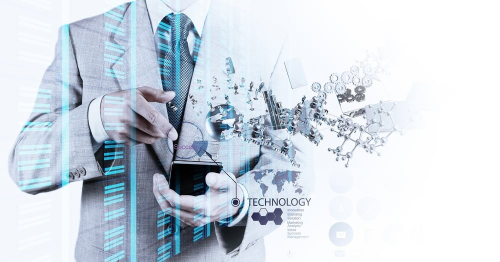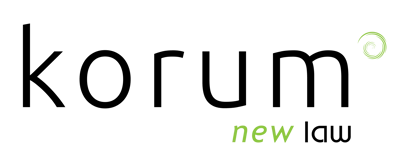Technology Regulation: Rethinking the Regulatory Framework.

Have you chatted online with your Bank recently - who really is Sharon from credit card support; an online bot, an avatar or actually Saran from one of Bangalore’s call centres? And confess what have you asked Amazon’s Alexa - ‘Hello Alexa, do you give the CIA a copy of my dinner party chat’? What about the drone you noticed flying through your local park – was it taking photos of your local streets, your children playing or was it transporting blood to a nearby car accident? And your Fitbit – where does the information go? Is your step count shared with your insurer? Finally do you actually know what information your Bank is relying on in determining whether to grant you that car loan or mortgage?
The Importance of Technology Regulation
There is no denying the rapid rise of ‘new technology’ during this, our 4th Industrial Revolution , poses challenges to governments, businesses and individuals globally as they grapple with the regulation and impacts of artificial intelligence and robotics, blockchain, cryptocurrencies, the Internet of Things (IOT), big data, biotechnology, virtual and augmented realities (new tech) just to name a few. With leaps in data aggregation, advanced algorithms, and computing capabilities, these technological 'machines' now execute tasks that were once exclusive to human intervention. Moreover, they possess decision-making capabilities, seamlessly integrating new datasets without explicit reprogramming.
As McKinsey noted in their 2017 report, Artificial Intelligence and South East Asia’s Future many such “machine learning” systems already have been put to commercial use with adoption growing around the world in sectors such as finance, health care, and transport and with these systems beginning to have a material impact in the UK, EU, the Asia Pacific region and the Americas, reshaping the landscape of technology regulation and the regulatory framework.
While the adoption of new tech and its growth in different regions and countries will ultimately be driven by market forces, governments still need to play a critical role in its adoption and growth. While regulating technology has never been easy given the extraordinary pace of change and the debate around its impacts. However, the establishment of a robust regulatory framework for new tech is imperative. Such a framework should not only facilitate effective adoption and growth but also steer public discourse toward ensuring that new technologies contribute positively to social outcomes and foster inclusive growth. Governments must champion the implementation of this framework, while companies should actively advocate for its adoption.
It is promising that public debate has already moved from the need for regulation of new tech to current discussion around the most effective form of regulation. The most obvious form of regulation is law - what form of law to adopt hasn’t been resolved though and given how rapidly technology is developing a key question remains: Is it possible to implement a regulatory framework through a legislative approach sufficiently flexible for the variety of scenarios arising with this ‘4th Industrial Revolution? Is it possible to implement a legislative approach sufficiently flexible for the variety of scenarios arising with this ‘4th Industrial Revolution’ where previously these scenarios were only described in books like George Orwell’s 1984 or movies like Avatar?
If conventional and prescriptive legislative rules for new tech are adopted or proposed, both individuals and companies need to be attentive to both the benefits and the risks or unintended consequences of any such legislation and consider its impact on their own new tech adoption or development.
Technology Regulation in the Banking & Finance Industry
According to McKinsey, more than 266 million people across the ASEAN region lack access to affordable financial services. McKinsey’s view is that analytics and eventually AI could play a key role in bringing affordable financial services to disadvantaged and low-income segments of the population which have to date been outside standard banking systems. McKinsey gives the example of Alibaba’s development of Zhima Credit, an in-house credit bureau based on advanced analytics as Alibaba is opening the way for lending to groups previously outside China/Asia’s banking systems.
Other ‘open banking’ initiatives include the Hong Kong Monetary Authority’s launch in September 2017 of a “New Era of Smart Banking” announcing seven primarily ‘new tech’ focussed initiatives including the promotion of virtual banking, enhancing the ‘Fintech Supervisory Sandbox’ and adopting an ‘Open Banking’ policy through initiatives centred on Open Application Programming Interfaces (APIs) for the banking industry in Hong Kong.
In Singapore, the Monetary Authority of Singapore (MAS) has been encouraging financial institutions to develop and share their APIs openly, so that they can work with other service providers to give customers a richer and more seamless experience again based around ‘open banking’ principles. These initiatives not only encourage innovation and competitiveness but also establish a structured framework that accommodates and regulates the integration of new technologies within the financial sector.
Data & Privacy Regulatory Frameworks
While these programmes all appear to have constructive and inclusive outcomes, in Australia the government recently announced it will compel companies such as Google and Facebook to provide Australian security agencies access to their customer’s encrypted data for national security purposes. These mandates signify a notable shift within the regulatory framework of technology. What will these types of “data accessibility requirements” mean for an individual’s use of technology, the operation of private entities and a variety of human rights such as the right to privacy and freedom of expression and association?
The EU, UK, Japan, Germany, Australia, China, the ASEAN countries and even Estonia are approaching the regulation of ‘new technology’ in different and novel ways. As the EU rolls out its new General Data Protection Regulation (GDPR) which among other changes restricts decisions made on the basis of automated processes ; the Australian Human Rights Commission recently launched a Project which will consider how law, policy incentives and other measures can be used to proactively promote human rights in this new era of technological development. These initiatives across different territories showcase the evolving landscape of technology regulation and underscore the imperative nature of adapting regulatory frameworks to address the challenges posed by technological advancements.
In the meantime, the UK Government is in the process of establishing a new Centre for Data Ethics and Innovation and through a House of Lords Select Committee has proposed an ‘AI Code’ designed for both the public and private sectors. Japan has introduced a new ‘Robot Strategy’ outlining a comprehensive program aimed at reforming existing legal & regulatory frameworks to harness the potential of robots effectively. This strategy strives to foster the development of varied robotic systems while initiating deregulation to propel the growth of the robotics industry.
Technology Regulation Going Forward
The Artificial Intelligence Singapore initiative is another pioneering “new tech” model, backed by 150 million Singaporean dollars in investment in AI over five years for the purpose of attracting resources, talent, and institutional support to Singapore and an objective of applying AI to finance, smart cities, and health care. This initiative stems from Singapore’s role in the Asia Pacific region as a financial centre with constraints on space and an ageing population. In Hong Kong, the Digital Asia Hub was recently created to provide a societal-level view of the implications of technological advances which will include examination of the appropriate regulatory frameworks. Estonia is considering giving robots status which is between the concept of a separate legal personality and an object that belongs to an individual. In Germany, regulation has already been developed which requires large social media companies to remove content inconsistent with local laws.
These diverse initiatives in Singapore, Hong Kong, Estonia, and Germany exemplify a global effort to navigate technological advancements while considering the implications of technology regulation and the societal impacts of emerging technologies.
Other approaches to ‘new tech’ regulation include accreditation systems and professional codes of ethics or human rights compliant design with some already in operation or proposed. For example, Australia has a National Statistical Service accreditation scheme that accredits agencies to act as ‘Integrating Authorities’ tasked with aggregating data sets, showcasing Australia’s commitment to robust data management within its regulatory framework.
Australia’s Chief Scientist, Alan Finkel has mounted compelling arguments in favour of ensuring public trust in the use of AI through a mark similar to the Fair Trade mark, which he has termed the ‘Turing Stamp’ (named for the famous computer scientist Alan Turing). Such a mark could give consumers the ability to ‘recognise and reward ethical conduct’ by procuring AI services or products bearing a ‘Turing Certificate’, which denotes they are worthy of trust.
The issues at the heart of new technology regulation are complex. Effective solutions can only be developed by lawyers, businesses, government and industry bodies working in collaboration to take advantage of the economic and social benefits that new tech and this 4th Industrial Revolution bring. As Ed Santow, Australia’s Human Rights Commissioner suggests, “technology should exist to serve humanity. Whether it does will depend on how it is deployed, by whom and to what end” and in my view how the law and regulation responds.
Liz Blackford
Nov 27, 2023
Related Posts.
By: Carlos Sanchez-Webb
Payment Tech & Regulation: New Emerging Innovation Market
On February 5th the payments industry got together in a grey and drizzly Brussels to face off and discuss the future of EU payments, the revised Payment Service Directive (PSD2), and, most notably,..
By: Danh Nguyen
6 Things You Should Be Aware Of Payments Regulation in APAC
Understanding Payment Services and Payment Regulations in APAC
In 2023, the Asia-Pacific (APAC) region continued to assert itself as a global payments hub, driven by rapid digital adoption and..
